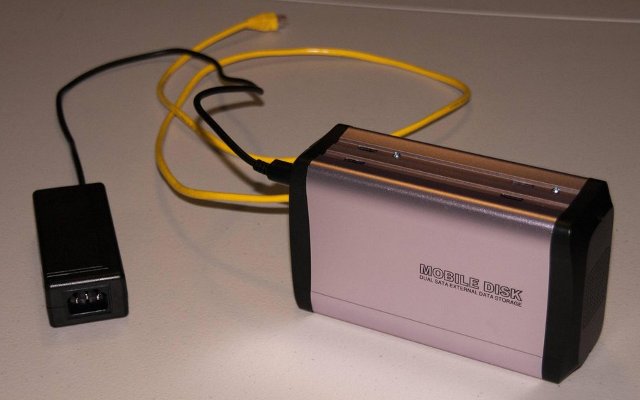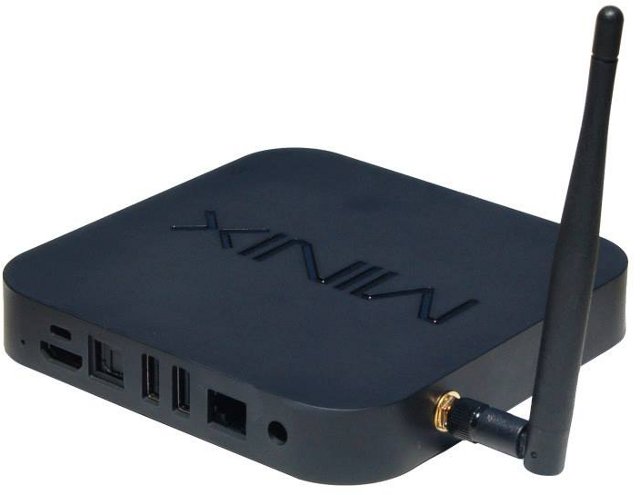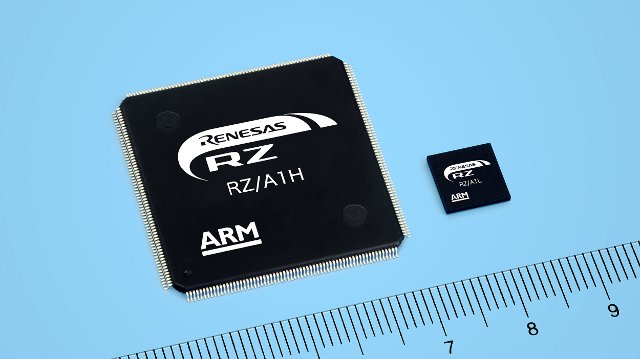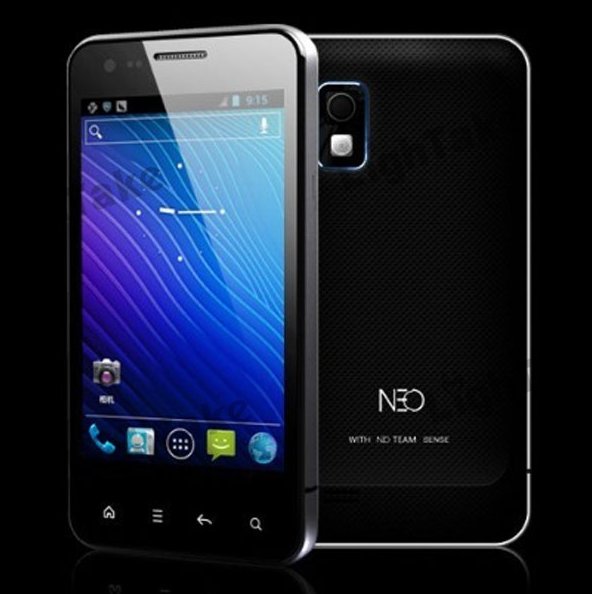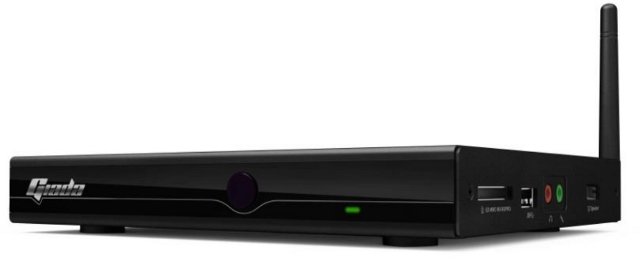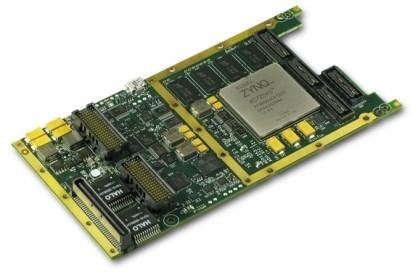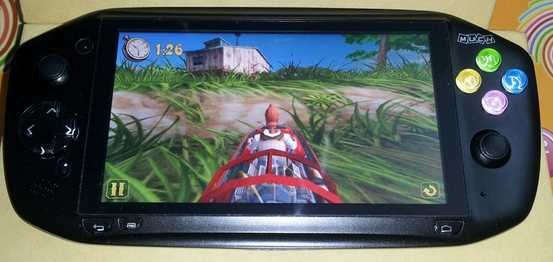The Cubieboard with a 1GHz processor, 1GB RAM, a SATA port and its low price ($49) is probably one the best available options if you want to make your own ARM based NAS. The hardware is easy to get, most of the software components (Linux, SAMBA/NFS server, Bittorrent client, etc…) are available, but there are no NAS enclosure available for the Cubieboard, so this part may be a little tricky. Cubieforums user Vustus has a pretty neat and cost- effective solution for an enclosure based on off-the-shelf parts. If you want to try it yourself, you’ll need the following parts: 3.5″ USB 2.0 aluminum external dual SATA HDD enclosure ($15) – http://www.geeks.com/details.asp?InvtId=ET-3541S 10″ Flat SATA cable ($2.49) – http://www.newegg.com/Product/Product.aspx?Item=N82E16812119365 SATA Y cable for power ($4.99) – http://www.newegg.com/Product/Product.aspx?Item=N82E16812198015 Power cable for th Cubieboard (taken from PSP power supply, as a cable would cost about $7 according to vustus) ($4.29) – http://www.amazon.com/gp/product/B002TK3GH8 […]
MINIX NEO X7 Quad Core Set-top Box Redesigned, Available Soon
When MINIX unveiled their RK3188 based MINIX NEO X7 at the Hong Kong Electronics Fair in April, they showcased a new enclosure design. Many people seemed to dislike the new “Lamborghini” casing, but the company listened to complains, and redesigned it to a more traditional casing, very similar to the one used for NEO X5. The company also disclosed the official specifications. SoC- Quad core Cortex A9 processor with quad core Mali-400 GPU (Rockchip RK3188) System Memory – 2GB DDR3 Storage – 16GB NAND Flash + SD/MMC card reader (SD 3.0, MMC V4.41) Connectivity: 802.11 b/g/n Dual-band Wi-Fi (2.4 / 5GHz) with external antenna 3G support via external USB dongle (not provided) 10/100M Ethernet (Supports hotspot sharing via Wi-Fi) Bluetooth V4.0 Video Output – HDMI 1.4a, full HD 1080p, 3D movie file format supported Audio Output/Input – HDMI 1.4a two channels, optical S/PDIF AC3 multi-channel, headphone and microphone jacks USB – […]
Cloud Media FreeOTT Player Review
Syabas was a company designing set-top boxes such as Popcorn Hour Media Tank that were relatively popular before the Android media player invasion. The company is now called Cloud Media, and they offer a tiny media player called FreeOTT that connects to their Apps Market and bring online video, Internet radio, social media and other streaming media to your television. The device is free (as in free beer), as it’s not actually available for sale to the general public, and the only ways to get it is to have your ISP or telecom provider set it to you, or win one from the regular giveaways organized by the company. I won one via a giveaway announced on their Facebook page, and I had just to pay $5 (via Paypal) for shipping. The company does not provide detailed specifications for their device but we do know it’s a Linux based media […]
Renesas RZ/A1 Cortex A9 Processors Feature Up to 10 MB On-chip RAM
Renesas Electronics has recently introduced the RZ/A1 group of ARM Cortex-A9 microprocessors (MPUs) for automotive, consumer and industrial applications requiring user interfaces with displays with a resolution up to 1280×768 (WXGA). The RZ/A1 series will come in three product groups: RZ/A1H, RZ/A1M and RZ/A1L with respectively 10MB, 5MB and 3MB on-chip RAM. These Renesas SoCs are an upgrade to SH7260 Series. Key Features (Included in A1H and A1M, but not always in A1L): Core – ARM Cortex A9 @ up to 400 MHz (with Jazelle and NEON) GPU – OpenVG-compliant Renesas graphics processor (2D graphics) Cache – 32-Kbyte L1 instruction cache, a 32-Kbyte L1 data cache, and a 128-Kbyte L2 cache. Built-in memory – Up to 10-Mbyte large-capacity RAM (128 Kbytes are shared by the data-retention RAM) for A1H, 5MB for A1M, and 3MB for A1L External memory Up to 66.67 MHz bus Direct connection to SRAM, byte select SRAM, […]
$87 NEO NS Goddess Dual Core Android Smartphone Powered by Qualcomm MSM8225
If you’re following the Chinese low cost smartphone space, you may only think about phones based on Mediatek or possibly Spreadtrum SoCs, but Qualcomm is now entering the arena with its dual core Cortex A5 MSM8225 SoC, and Android smartphones based on the platform such as NEO NS Goddess are available for less than $100, and in this case just $87. NEO NS Goddess specifications: SoC – Qualcomm Dual Core MSM8225 @ 1GHz with Andreno 203 GPU System Memory – 512MB RAM Storage – 512MB ROM + micro SD card slot (TBC) Display – 4.0″ 5-point capacitive touchscreen (800×480) Camera – 0.3MP front camera, 5.0MP back camera Connectivity – Wifi 802.11b/g/n, Bluetooth, GPS Network – 2G GSM 900/1800, 3G WCDMA 2100MHz (Dual SIM card) USB – 1x micro USB Audio – 1x earphone jack Sensor – G-sensor Support Battery – 1500mAh rechargeable Li-ion battery (up to 3 days) Dimensions – 124x64x11.6 […]
$130 Giada Q11 Android PC Features an LVDS Port, a mini PCIe slot, a Battery and 2.5″ HDD Support
Giada Q11 is an Android media player powered by AllWinner A10 with 1GB RAM and 8GB flash, which are pretty low specifications by today’s standard, so I would probably not recommend using at home. However, it comes with some pretty rare ports and features: an LVDS port, a mini PCIe slot (for 3G module only), a COM port, and a 2200 mAh battery capable of driving displays. Those extra features could make it a pretty good solution for specific applications such as high definition digital signage players. If your setup does not support networking, and you need to store media files in the device, a 2.5″ for SATA hard drive is also available. Giada Q11 Specifications: SoC – Allwinner A10 Cortex A8 processor @ 1GHz + ARM Mali-400 GPU System memory – 1GB DDR3 Storage – 8GB NAND flash, micro SD card slot (up to 32GB), and SATA II (2.5″ […]
Alpha Data ADM-XRC-7Z1 XMC Mezzanine Card Powered by Xilinx Zynq SoC
Alpha Data, a company providing solutions for compute intensive applications, has announced the ADM-XRC-7Z1, an XMC board powered by Xilinx Zynq-7045 or Zynq-7100 Cortex A9 + FPGA SoC targeting application such as software-defined radio, radar and sonar processing, image processing and machine vision. If you are like me, and have never heard about XMC mezzanine cards before, here’s what Wikipedia has to say about it: XMC, or Switched Mezzanine Card, is a PCI Mezzazine Card (PMC) with high-speed serial fabric interconnect defined by the VITA 42 standard. XMC specifies a 5th connector (“P15”) that supports PCI Express (VITA 42.3) or other high speed serial formats such as Serial RapidIO (VITA 42.2) and Parallel RapidIO (VITA 42.1). VITA (VMEbus International Trade Association) is an organization developing and promoting open technology standards that you can download for a fee. Here are the specifications of the board: SoC – Xilinx Zynq-7045 or Zynq-7100 dual […]
Media Magic i5 is a 5″ Android Game Console Powered by Mediatek MT6589
Mediakek MT6589 processors are omni-present in the latest Chinese smartphones, and we can see new models based on the platform pop-up every week. But Mediatek SoC are almost exclusively used in smartphones and tablets, so MUCH Media Magic i5 Android Game Console proves it can also be used in other applications too, although one might argue a portable game console is just a tablet, or in this case a phablet, with some extra buttons… Magic Media i5 Specifications: SoC – Mediatek MT6589 quad core Cortex A7 @ 1.2GHz + PowerVR SGX544MP GPU System Memory – 1GB LPDDR2 RAM Storage – 4GB of storage memory Display – 5 “IPS display with 1280×720 resolution Battery – 3550 mAh Network – 3G-WCDMA module with dual sim Camera – Rear and front cameras USB – 2x microUSB ports Controls- Physical keys with shortcuts … The device runs Android 4.2 and is said to come […]


